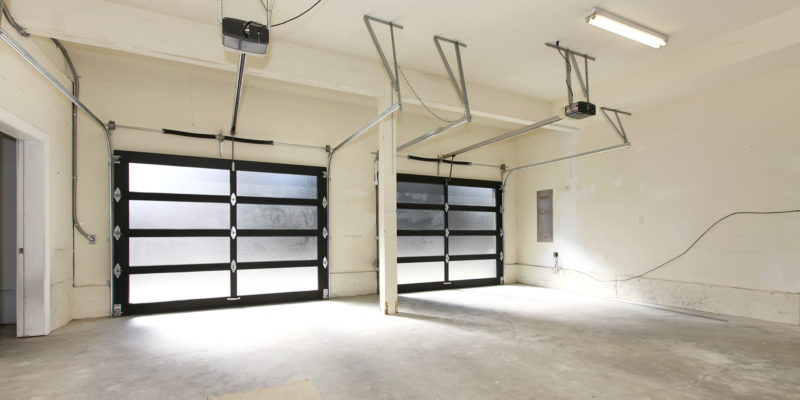Every garage door needs springs to ensure that it can open and close safely.
Whether you’re looking to buy new springs or just wondering what the situation is with your home, it’s important to know what garage door spring type you currently have.
The two main types of garage door springs are extension springs and torsion springs. Virtually every garage in America has one or the other, or sometimes both.
Garage door extension springs and torsion springs both have their own unique features, advantages, and functionalities. This comparative guide can help you learn exactly how they differ.
Extension Springs Explained
First, let’s begin by explaining what extension springs on a garage door actually look like. They typically run along each side of your garage, rather than above the door.
They look like tight spring coils that extend outwards to close your garage door.
Extension springs are always connected to pulleys that run along the walls of your garage which, in turn, are connected to cables. They come in a single loop, double loop, and clip format.
Extension springs are typically found in older homes and are not manufactured at the same rate as they were decades ago. This is because they can be delicate and tricky to set up, with the balance between the springs and pulleys being a particular challenge.
In addition, extension springs are more prone to wear and tear. This can cause them to disconnect from the cables and cause serious damage and injury. They also require more parts and typically do not last as long as torsion springs.
Torsion Springs Explained
Torsion springs always run above the garage door. This means that if your springs are above the door rather than along the sides, you have torsion springs.
Torsion springs end in metal fixtures called cones and are connected to metal tubes, rather than pulleys. A torsion bar garage door fixture runs along metal shafts that connect to the cable drums in each corner of your garage. Most garage doors only have a single torsion spring. However, particularly heavy doors, or double doors, will usually have two torsion springs.
Rather than extending, torsion springs turn to open the door. This means that they tend to take up less space. They use fewer parts than extension springs and typically last much longer. Your average torsion spring lasts for around 20,000 turns, which equates to about 7 years of use for your garage.
This is almost double the lifespan of extension springs. As you can guess, torsion springs tend to be the norm in newer, more contemporary garages.
Which One is Right for Me?
Put simply, torsion springs are better for virtually every garage. They allow for a smoother, less-jerky opening motion.
They last longer, they take up less space, and they are much easier to maintain and less likely to rust than extension springs.
They are also safer, given that they are less prone to suddenly snapping or breaking down. Garage door safety is key for protecting yourself and your family. This is why you should consider opting for torsion springs over extension springs.
Learn More
Now that you know the difference between extension springs and torsion springs, it’s time to upgrade your garage.
Make sure to check out our state-of-the-art garage door openers that will provide added convenience, safety, and value, or check out our blog if you have more questions related to the best garage door for you.
Contact Premier Door today to upgrade your residential or commercial garage door.

